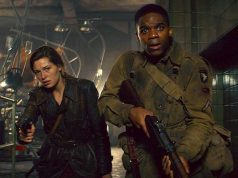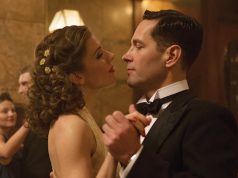With the 1995 HBO film “The Tuskegee Airmen” already well-regarded as the definitive account of the U.S. Army’s first squad of black fighter pilots, you have to wonder what purpose is served by “Red Tails,” which covers much of the same territory and does so without distinction or flavor. Made by TV director Anthony Hemingway (his big-screen debut) with some help from executive producer George Lucas, “Red Tails” looks more like a TV movie than the TV movie did, and is disappointingly shallow. A true story as inspiring as this one deserves a more insightful treatment.
After a title card reminds us that Negroes were once considered unfit for military service because of supposed inherent character and intellectual weaknesses, “Red Tails” drops us into the action in Italy, 1944. A group of black pilots who trained at Tuskegee, Ala., as an “experiment” to see whether their race could be as skillful as whites at shooting enemies while flying airplanes has been relegated to unimportant missions. They’ve been given just enough work for the top brass to say they’re being used, but not enough to actually matter. In the skies above them, their white counterparts act out a dogfight so comic-book corny that I honestly thought we were seeing a video game or other simulation. (The movie’s first line of dialogue is a gleeful exclamation: “Germans! Let’s go!” The only thing missing was “Wheee!”)
These Tuskegee flyers are portrayed as a generic bunch of war movie stock characters, all represented by nicknames. Easy (Nate Parker) is their strict team leader; he drinks a lot. His best friend, Lightning (David Oyelowo), is a maverick and a hotshot, and the one burdened with the obligatory romance with a local Italian girl (Daniela Ruah). Deacon (Marcus T. Paulik) trusts that “black Jesus” will protect him; Junior (Tristan Wilds) is the enthusiastic new recruit; Smoky (Ne-Yo) plays blues guitar; Joker (Elijah Kelley) jokes; you get the idea.
Their commanding officers, Col. Bullard (Terrence Howard) and Maj. Stance (Cuba Gooding Jr.), do all they can to convince the higher-ups that the team deserves to be trusted with an important mission. When they do accomplish something impressive, racist Col. Mortamus (Bryan Cranston), with his smooth Southern-gentleman accent, tells Bullard, “Eight German fighters or 80 German fighters, it still doesn’t change what I think of you and your boys.” Later, the Tuskegee Airmen are assigned to escort an all-white group of pilots, who figure, oh great, having black pilots next to us is the same as having nobody next to us. When the Tuskegee boys, their planes’ tails painted a distinctive red, prove their worth, the racists immediately change their tune. “I hope we meet up with those Red Tails next time!” says one.
And that’s the film in a nutshell. We never get a real sense of the persecution and mistrust these pilots faced, nor do we get a real sense of what it felt like to overcome it. The racism is portrayed in the dullest, simplest terms — and so is the men’s resilience in the face of it. The plodding screenplay (by John Ridley and Boondocks comic creator Aaron McGruder) is so genteel as to be mundane, and Hemingway directs with more reverence than energy. The only time the movie really comes to life is during the dogfight scenes, which are moderately exciting but still riddled with old cliches.
What we’re left with is a respectful and well-intentioned historical drama that is neither good enough to seek out nor bad enough to actively avoid. The story of the Tuskegee Airmen ought to be told more often than it is. “Red Tails” is better than nothing — but “nothing” isn’t the other option. That HBO film is still out there, and “Red Tails” doesn’t add to it or improve upon it.
C (2 hrs., 5 min.; )





